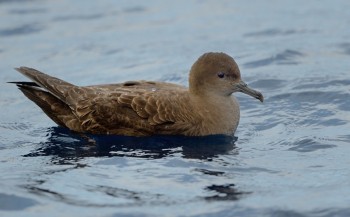Sarah Wong (Department of Biology, Acadia University, Wolfville, Nova Scotia, Canada) and colleagues have published in the Journal of Geophysical Research: Oceans on seabird makeup and numbers in the North American Arctic.
The paper’s abstract follows:
“The distribution and thickness of sea ice in the Arctic is changing rapidly, resulting in changes to Arctic marine ecosystems. Seabirds are widely regarded as indicators of marine environmental change, and understanding their distribution patterns can serve as a tool to monitor and elucidate biological changes in the Arctic seas. We examined the at-sea distribution of seabirds in the North American Arctic in July and August, 2007-2012, and marine areas of high density were identified based on bird densities for four foraging guilds. Short-tailed shearwaters (Puffinus tenuirostris) were the most abundant species observed. Northern fulmars (Fulmarus glacialis), thick-billed murres (Uria lomvia) and dovekies (Alle alle) were also sighted in large numbers. Few birds were sighted between Dolphin and Union Strait and King William Island. Areas of high density over multiple years were found throughout the entire western portion of the study area (Bering Sea, Bering Strait, Chukchi Sea), Lancaster Sound, Baffin Bay, Davis Strait and the low-arctic waters off Newfoundland. These waters are characterized by high primary productivity. This study is the first to document the marine distribution of seabirds across the entire North American Arctic within the same time period, providing a critical baseline for monitoring the distribution and abundance of Arctic seabirds in a changing Arctic seascape.”

Short-tailed Shearwater at sea, Photograph by Kirk Zufelt
Reference:
Wong, SN.P., Gjerdrum, C., Morgan, K.H. & Mallory, M.L. 2014. Hotspots in cold seas: The composition, distribution, and abundance of marine birds in the North American Arctic. Journal of Geophysical Research: Oceans DOI: 10.1002/2013JC009198.
John Cooper, ACAP Information Officer, 28 March 2014

 English
English  Français
Français  Español
Español